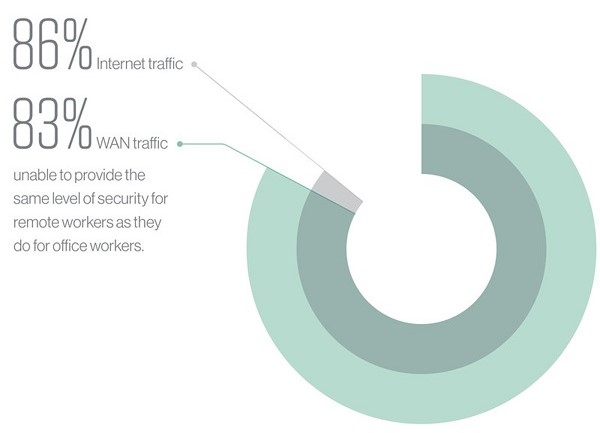Cato Networks, a provider of a Secure Access Service Edge (SASE) platform, released the results of its “Work from Anywhere” survey, which found that despite massive investments in remote access infrastructure during the COVID-19 pandemic, most companies continue to struggle supporting remote workers.
In short, the deployed remote access technology fails to meet enterprise requirements, forcing support and helpdesk to compensate.
“The pandemic has shown us that businesses are no longer tied to a specific office or location,” said Eyal Webber-Zvik, vice president of product marketing at Cato Networks. “Work from anywhere has shifted business focus from the place of work to the users and the work they need to do. This shift created a whole slew of operational and budgetary challenges for IT in service delivery, access optimization, and pervasive security that are designed around locations rather than people. We are now able to identify these issues and address them.”
During the pandemic, enterprises had to adapt to a work-from-anywhere business model, moving the workplace from the office to an individual’s remote location. Many enterprises chose to invest in their existing and known security platforms, particularly centralized VPN servers (42 percent). Many respondents (40 percent) indicated they backhaul remote access traffic today to a VPN server.
In the post-pandemic environment, 82 percent of respondents indicated their companies will continue with work-from-anywhere or remote only models. This is reflected in their priorities post-pandemic. Providing secure internet access everywhere continues to be the top priority for 67 percent of respondents.
“The pandemic has shown us that businesses are no longer tied to a specific office or location,” Webber-Zvik stated. “By implementing a work from anywhere model, businesses are transitioning to a more efficient and collaborative way of doing business, allowing them to better meet the needs of their customers, as well as their employees.”
But while a hybrid working model may be good business, the rush to implement remote access at scale has created significant problems for IT. Seventy-eight percent of respondents say they’re spending more time supporting remote workers; 47 percent reported time supporting remote workers grew by 25 percent or more.
This is particularly true for respondents of legacy networks where remote traffic is backhauled to a centralized VPN server. In those environments, remote user complaints soared to 83 percent of respondents, versus 45 percent of those sending traffic local security appliances or services.
More specifically, respondents broke remote user challenges down into three areas – service delivery, application performance and security:
- Service Delivery – Remote users suffer in most cases when accessing services. More than half of respondents indicated that users complain about connection instability (52 percent) and poor voice or video quality (28 percent).
- Application Performance – More than a third (36 percent) of respondents indicated slow application response was the most dominant remote user complaint. For those that backhaul traffic, 30 percent said application performance for remote users was worse than in the office versus just 22 percent for those not backhauling traffic.
- Security – Nearly half (44 percent) of respondents indicated they could not provide remote workers with the same level of security for all traffic as their office counterparts. And the vast majority — 86 percent for internet traffic and 83 percent for WAN traffic — were unable to provide the same level of security for remote workers as they do for office workers.
Remote workers are being protected, predominantly by IPS and antimalware but rarely by Sandboxing. Best practice for remote authentication — the use of SSO (Single Sign On) and MFA (Multi Factor Authentication) — is only being implemented by 33 percent of respondents, while 24 percent continue to rely on the weakest of approaches — username and password.
Enterprises that took the leap and embraced SASE experience fewer support challenges. This is because SASE treats remote users no differently than locations. All security and optimization services available to office workers secure and improve the remote user experience.
“Enterprises that have adopted SASE are able to instantly connect and secure remote users everywhere,” Webber-Zvik said “Instead of spending weeks or months updating legacy infrastructure and updating remote workers software applications, SASE enables IT departments to install new applications and security protocols in minutes across the entire network. This not only saves time, but it also reduces overall costs and ensures adoption across all platforms and remote access points.”
To learn more about the survey and how Cato addresses the challenges posed by widespread remote access, visit https://www.catonetworks.com/.









